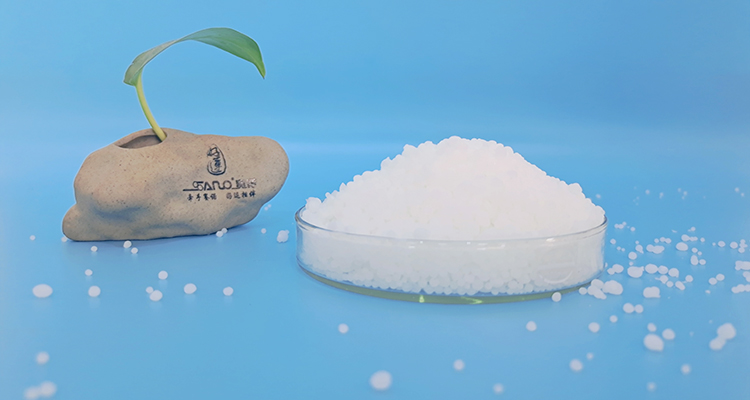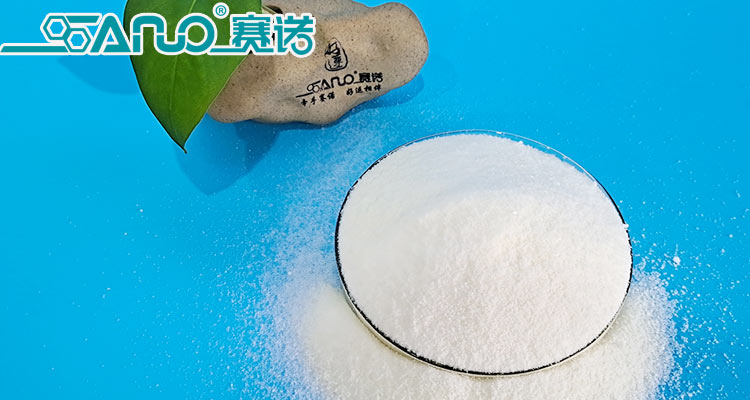Today, follow Qingdao Sainuo ope wax manufacturer to learn about common problems and solutions in PVC injection foaming shoe material molding.

ope wax for PVC producr
1. Overflow flash
(1) If the die seal is not tight, the die should be repaired.
(2) Cooling speed is too slow. The cooling efficiency should be improved and the cooling speed should be increased. It is best to pass cooling water through the bottom mold, and the cooling effect is good.
(3) Excessive injection volume and feeding. Should be appropriately reduced.
(4) Improper combination of plasticizing time and injection pressure. After measuring the relationship curve between pressure and foaming time, reasonably adjust the injection pressure and foaming time.
(5) The inner lining plate of the die is warped and deformed. The inner panel shall be repaired or replaced.
(6) Insufficient clamping force due to oil leakage of hydraulic system. The hydraulic system should be repaired.
(7) The spring on the pin die hook is too loose. The spring should be replaced to increase the tension of the hook.
(8) The setting time is not enough, and the surface of the product has not been cooled thoroughly. During the first mold opening, the hot material in the middle breaks through the surface and overflows. The first mold opening time shall be appropriately extended.
2. There are big bubbles
(1) The particle size of foaming agent is too coarse and the dispersion is uneven. Generally, the foaming agent needs to be grinded by three rollers, generated in the material barrel, grinded by the mill for 2 ~ 4 times, and then used after grinding.
(2) During kneading and granulation, the processing temperature is too high, the foaming agent decomposes prematurely, and the particles have foaming phenomenon. The kneading and granulation temperature shall be properly reduced, and there shall be no vesicles when the extruded particles are cut.
(3) The retention time of molten material in the barrel is too long or the processing temperature is too high. Rapid pre molding shall be adopted. The plasticized melt shall be injected at one time, and one machine multi-mode production shall be adopted as far as possible.
(4) The back pressure of the screw is too small, and the molten material is heated and expanded in the barrel. The back pressure should be increased so that there is no chance of pre expansion after the foaming agent contained in the melt is decomposed by heating.
(5) The material leakage at the end of the barrel forms a low-pressure area at the end outlet, resulting in the expansion of molten material at the outlet and the formation of bubbles. The outlet temperature shall be properly reduced. It is best to adopt throttle valve structure at the outlet to seal the end outlet.
(6) The recycling proportion of recycled materials is improper. Its dosage shall be appropriately reduced.
3. Foaming ratio is too large
(1) Too much blowing agent is fed, resulting in too high gas generation. The gas output shall be measured and the feeding shall be accurate.
(2) The amount of plasticizer is too much and should be reduced appropriately.
(3) If the mold pulling temperature is too high, the mold shall be cooled down and pulled out.
(4) Pressure holding time is too short. It shall be ensured that the products are completely shaped and then out of the mold.
4. Insufficient foaming ratio
(1) The amount of blowing agent is too small, resulting in insufficient gas generation. The gas output shall be measured and the feeding shall be accurate.
(2) The amount of plasticizer is too small. The feeding amount shall be increased appropriately.
(3) When the product is processed for the second time, the second expansion time is too short. The cooking foaming time during processing shall be appropriately extended, and the interval between the first and second foaming shall not exceed 12 hours.
(4) When there are baking paint patterns on the surface of the product, it indicates that the expansion and foaming of the first mold opening is too slow. The first mold opening time shall be appropriately shortened.
(5) When there are small bubbles on the surface of the product, it indicates that the injection temperature is too low. The injection temperature should be appropriately increased. However, if the foaming still does not occur after the molding temperature is increased, the first mold opening time should be further shortened.
5. Uneven aperture
(1) The particle size of foaming agent is inconsistent and the dispersion is not good. The foaming agent shall be used after grinding.
(2) Too low injection pressure or too slow injection speed will cause the melt to expand during mold filling and form bubbles of different sizes. The injection speed should be properly accelerated and the injection pressure should be increased.
(3) The forming temperature is too high. It shall be reduced appropriately.
(4) There is too much material retention in the barrel. The first mock exam should be done to reduce the storage.
(5) Insufficient screw back pressure. It should be properly improved.
6. Solid depression
(1) The product is too thin, and the melt is subject to large flow resistance during mold filling, resulting in low pressure and insufficient mold filling in some parts. The product thickness shall be reasonably designed. Generally, the unfoamed thickness shall be more than 6mm, and the thickness shall be as uniform as possible.
(2) The cooling is uneven, and some parts are cooled too fast, making foaming difficult. The product shall be cooled evenly, and the cooling system of the die must be set reasonably according to the physical characteristics of the product.

7. Gate depression
(1) Gate section size is too large. It shall be reduced appropriately.
(2) The holding time is too short and the die withdrawal is too fast. The pressure holding time shall be extended appropriately.
(3) The forming temperature is too high or too low. It shall be adjusted appropriately.
(4) The hydraulic system of the molding machine is faulty and the injection pressure is insufficient. The hydraulic system should be repaired to increase the injection pressure.
8. Traces of flowing materials
(1) The forming temperature is too low or the temperature difference in each heating area is too large. The forming temperature shall be properly increased and the heating temperature of each part shall be adjusted.
(2) The injection speed is too slow. It should be accelerated appropriately.
(3) Insufficient material supply. The feeding amount shall be increased appropriately.
9. Poor gloss
(1) The resin viscosity is too high and the plasticizer absorption is uneven. Resin shall be selected reasonably.
(2) Bubble shrinkage forms uneven pitted surface. The cause of bullae shall be found out and the bullae fault shall be eliminated.
(3) The molding die temperature is too low. The molding temperature should be appropriately increased.
(4) Poor surface finish or corrosion of mold cavity. The surface finish of the die shall be improved.
(5) There are residues on the surface of the mold cavity. The mold cavity shall be cleaned.
(6) As the foaming agent on the surface of the molten material decomposes and foams during mold filling, some bubbles are torn during flow, forming paint like patterns, affecting the surface gloss of the product. In this regard, auxiliary methods such as color spraying and polishing can be used to improve the surface gloss.
10. Uneven color
(1) The pigment is not accurately weighed. It shall be accurately weighed.
(2) The pigment is unevenly dispersed. The pigment shall be ground and pressed with a grinder.
(3) The quality of pigment is poor, the color is changeable, and its coloring power is not strong. Pigments with good coloring performance shall be selected.
(4) Local plasticizing temperature is too high, causing discoloration. Check the heating system and reduce the local temperature.
(5) There are paint baking patterns on the surface to form color difference. The first mold opening time shall be appropriately shortened.
11. Raw material
(1) Insufficient molding temperature and poor plasticization. The heating system should be checked to increase the forming temperature.
(2) The formulation of raw materials is unreasonable. The formula should be adjusted.
12. Layering
(1) Too much foaming agent. Should be appropriately reduced.
(2) Molding temperature is too high. It shall be reduced appropriately.
(3) Setting time is too short. The cooling and setting time shall be appropriately extended.

13. Deformation
(1) The foaming ratio of the bottom surface and the top surface of the product is inconsistent or the local foaming ratio is too high. The heat transfer of the mold shall be checked. The thickness ratio of the mold must be appropriate and the temperature must be uniform.
(2) Cooling and setting time is too short. The cooling and setting time shall be appropriately extended.
(3) The stress distribution in the condensation layer of the product is uneven. Check the temperature distribution of the mold and adjust the condensation stress of the molten material.
(4) Improper control of mold discharge time, or too early mold discharge, overheating mold discharge; Or the mold is too late and the mold is too cold. The die out time shall be reasonably controlled.
14. Dimensional instability
(1) Foam limit control is different. Foam limit shall be strictly controlled.
(2) In single batch and single mold production, or the control of forming temperature and qualitative time are different. The consistency of process conditions shall be strictly controlled, the first mock exam method can also be used to improve the consistency of products.
(3) The mold error exceeds the error of foaming ratio. The die shall be trimmed to reduce the die error.
(4) Uneven mold filling or mold deformation for a long time. The structural size of mold gating system shall be adjusted, and the mold shall be trimmed to reduce the error.
(5) Die leakage. The mould shall be trimmed.
(6) Inconsistent cooling of products. The mold heating and cooling system shall be checked to ensure that the mold surface temperature is uniform.
(7) Insufficient clamping force. The tension of the draw hook spring shall be adjusted to appropriately increase the clamping force.
Qingdao Sainuo Chemical Co.,Ltd. We are manufacturer for PE wax, PP wax, OPE wax, EVA wax, PEMA, EBS,Zinc/Calcium Stearate…. Our products have passed the REACH, ROHS, PAHS, FDA testing. Sainuo rest assured wax, welcome your inquiry! Website:https://www.sanowax.com
E-mail:sales@qdsainuo.com
sales1@qdsainuo.com
Adress:Room 2702,Block B, Suning Building, Jingkou Road, Licang District, Qingdao, Chinac
Post time: Aug-26-2024
